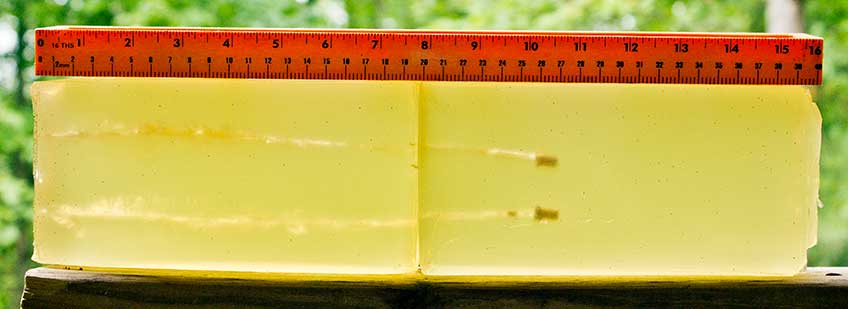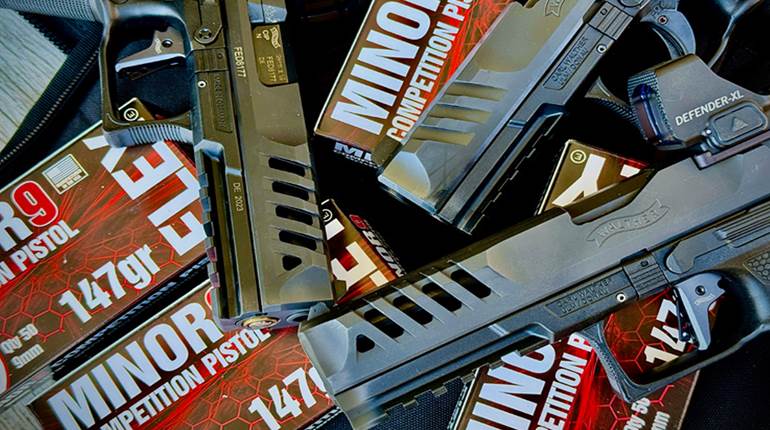
This article appeared originally as "The .22 Magnum for Self-Defense?" in the June 2013 issue of American Rifleman. To subscribe to the magazine, visit the NRA membership page here and select American Rifleman as your member magazine.
A practical personal protection plan should include a handgun, but that handgun should, without question, be one you’re comfortable with. As you become more experienced you’ll have the opportunity to further evaluate the situation and trade-up as your comfort and skill levels increase. For some, a gun chambered in .22 Winchester Magnum Rimfire (WMR), also known as .22 Magnum, might be the best place to start. It’s also affordable, readily available and relatively easy to shoot.
The .22 Magnum is just one of many cartridges that comes in handguns sized for personal protection or concealed carry. A compact and light handgun like Ruger’s 16-ounce LCRx is a perfect example of a carry-size .22 Magnum revolver. For those who want to carry the smallest handgun possible, the North American Arms Mini Revolvers, which weigh less than 6 ozs. and have 1" barrels, are about as small as small gets.
Many consider the .22 Magnum too small for self-defense, but what do the facts and some common sense tell us? To answer this question, we need to keep things in perspective. Unlike hunters, those who use a handgun to thwart violence don’t primarily intend to kill. The goal is to make the bad guy stop doing bad things.
Handguns stop a threat in three ways. One is by causing enough pain that the bad guy submits or voluntarily decides further violent action is a bad idea. Another way is through incapacitation, which is an involuntary reaction on the part of the bad guy in response to being shot. Incapacitation can be instant or it can take a long time.
The third way handguns stop evil intent is through fear. No one wants to get shot with any gun. Law-enforcement personnel will tell you that they point guns at bad guys much more often than they shoot them. The most common response when a gun is pointed at someone is that they stop being bad and put their hands up or run. This voluntary surrender is the most common and effective way handguns stop crime, whether in the hands of police officers or citizens.

What we want to explore here is how effective a .22 Magnum handgun might be at triggering these three outcomes. If just pointing the gun at the bad guy is enough, then caliber or cartridge is of no consequence—score one for the .22 WMR. If a shot is required, will the .22 Magnum be capable of causing enough pain to make the bad guy submit or voluntarily stop, and is it even capable of causing swift, involuntary incapacitation?
Terminal ballistics testing in 10-percent ordnance gelatin is about the only way we can gauge the potential effectiveness of any cartridge. By comparing how various .22 Magnum loads perform in ordnance gelatin with how other, more trusted, larger-caliber handgun loads perform, we can hypothesize on the fight-stopping potential of the round.
Make no mistake, velocity matters when it comes to terminal performance. It’s why .357 Mag. is more effective at stopping bad guys than .38 Spl. With the .22 Magnum, velocity is just as, if not more, important because of its relatively small bullet.
Interestingly, many .22 Magnum loads are made for use in rifles, and the longer barrels result in substantially more velocity than if the same loads were shot through handguns. With that in mind, I conducted a series of tests with various .22 Magnum loads fired from barrels as short as 1" to as long as 22".
The results can be found in the accompanying table, but before you try to digest all those numbers, let’s consider what these tests actually tell us.

Admittedly, 10-percent ordnance gelatin, as often as it is used and referenced, is not the same as a bad guy. It is simply a ballistic test medium which is thought to offer the same resistance to a bullet as would muscle tissue. It does not replicate skin, ribs, cartilage or fat and, in fact, very often the way a bullet performs in living tissue is quite different than how it performs in gelatin. Ordnance gelatin is merely a test medium that offers comparisons between projectiles on an even playing field.
So what you see in these results is how these loads compare to each other and to more powerful defensive handgun loads such as the 9 mm and the .45 ACP. With those cartridges you can generally expect penetration in the 13" range. Interestingly, if we average the penetration of the .22 Magnum loads tested from handguns with barrels ranging from 1" to 4.5", we find they penetrated to just over 12". Not much difference.
The average 9 mm velocity from defensive handguns with varying barrel lengths runs about 1,175 fps. From a .45 ACP, the average muzzle velocity is almost 1,000 fps. Averaging all the .22 Magnum loads tested in all the different handgun barrel lengths, we find the muzzle velocity to be about 1,050 fps. From a numbers standpoint, the velocity and penetration of the .22 Magnum, when compared to a 9 mm or a .45, is not all that different.
The difference in the terminal performance of a .22 Magnum when compared to a 9 mm or a .45 is mostly in expansion and energy. Expansion is important because if you have two holes that are the same depth, the hole that has the largest diameter will also be the one that is likely to do the most tissue damage. The average frontal diameter of recovered .22 Magnum bullets is about 0.27 inches. That is substantially less than the average for the 9 mm Luger, at 0.55 inches, and the .45 ACP at 0.61 inches.
So, on average, you can expect a .45 ACP to damage about 3.79 cubic inches of tissue and a 9 mm Luger to damage about 3 cubic inches of tissue. The best .22 Magnum loadings will damage less than 1 cubic inch of tissue.

Actually, statistics—if you can trust statistics—support the hypothesis that it’s the fear of getting or having been shot that most often leads to a fight being stopped. Of course, fear and even pain will most likely have little influence on someone high on meth, crack or even adrenaline.
In those instances, it’s the involuntary incapacitation that must be relied upon. Instant involuntary incapacitation with any handgun is rare and, with a .22 Magnum damaging four times less tissue and hitting with about a quarter of the energy of a 9 mm or .45 ACP, I think it’s logical to assume involuntary incapacitation with a .22 Magnum cartridge is four times less likely to happen.
But what if you can’t be concerned with such numbers? What if a .22 Magnum is the most powerful handgun you can shoot effectively? What if a .22 Magnum is all you have? What ammunition should you choose for a .22 Magnum defensive handgun if that’s what you are going to carry?
Based on the testing I conducted, two things were obvious: Barrels of about an inch in length did not generate enough velocity for reliable expansion with most .22 Magnum loads. Terminal performance from barrels between 2" (1.8") and 5" (4.6") was, for all practical purposes, identical.
It was also clear from the results, with the exception of four loads; Hornady’s Critical Defense, Speer’s Gold Dot, Winchester’s PDX1 and the somewhat surprising CCI TNT load, no other .22 Magnum load will expand from a handgun.

The Hornady, Speer and Winchester loads, which performed well and even expanded through denim—except from the 1" barrel—seem to be the obvious choice, especially with penetration around the magic 13-inch mark. No surprise here; all of these loads were purpose-built for the defensive handgun. On the other hand, the 30-gr. CCI TNT load was the only load that expanded from every firearm, in every test.
Even though these loads did expand, they did not expand much; 0.19" of expansion was the most recorded from any handgun, and bear in mind that is slightly more than 3/16". The .22 Magnum is drastically handicapped by power and energy—energy that’s needed to push through clothing, ribs and muscle. It might make just as much sense to use loads with non-expanding projectiles such as the 40-gr. full metal jacket or common hollow point, which should penetrate slightly deeper.
Here’s another consideration. The Hornady, Speer and Winchester loads utilize flash-retarding propellants. That means that if you have to shoot in near darkness, you won’t be blinded by the light—muzzle flash. Even though the CCI TNT load expanded well in every test, the muzzle flash from it and the other loads was like a fireball. That might scare your attacker more, but it does nothing for your night vision.
I still believe any gun is better than no gun. I also believe there are a lot of cartridges better suited for personal protection than a .22 Magnum. Still, as a deterrent, it’s probably as effective as anything else. As for being able to bring about voluntary submission, it’s anybody’s guess how this cartridge should be rated; we simply cannot predict psychological reactions.
Where the .22 Magnum appears to fall short is in its ability to bring about instant involuntary incapacitation. You’ll definitely need something that makes a bigger hole if that’s your goal.





































